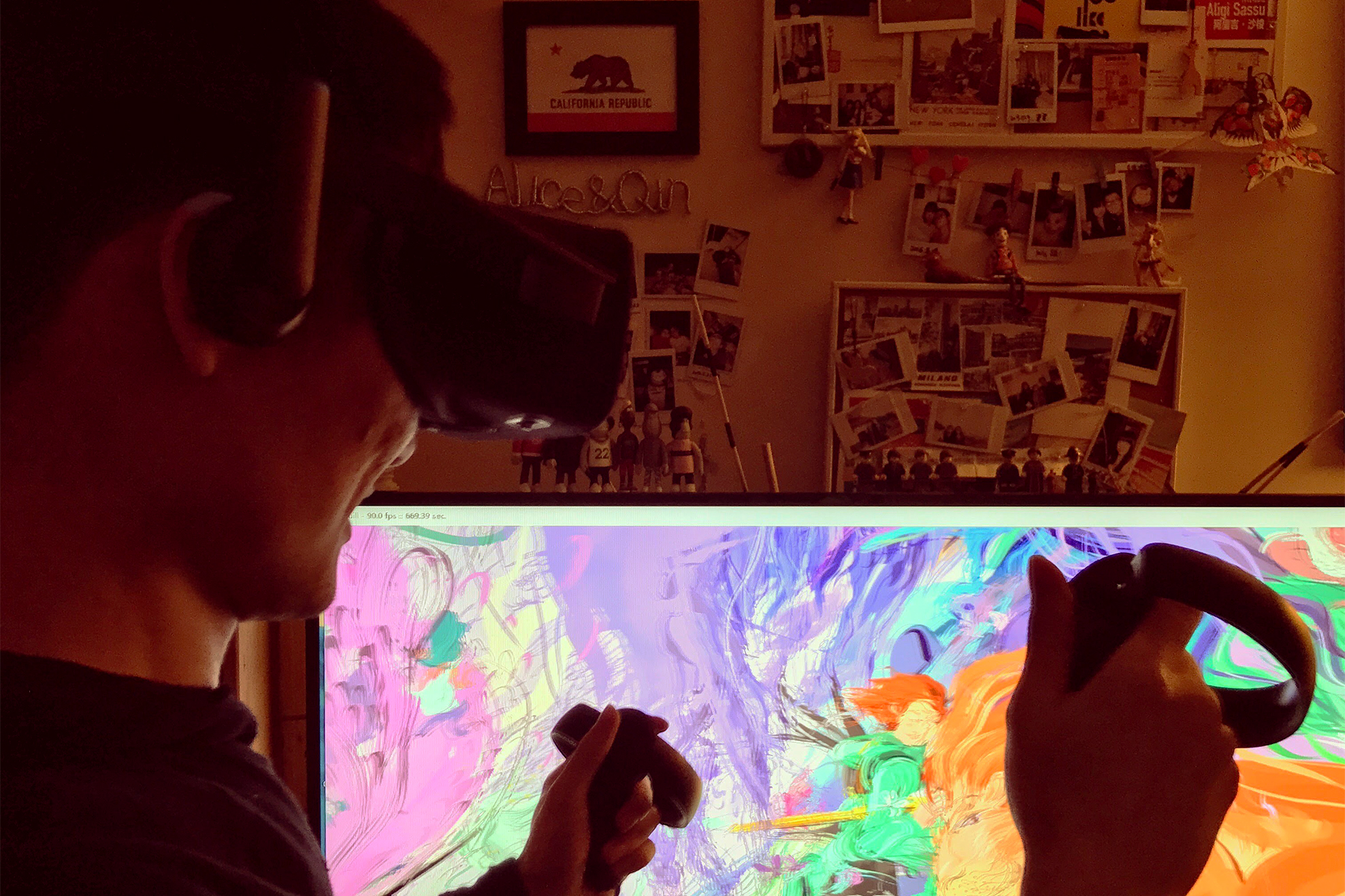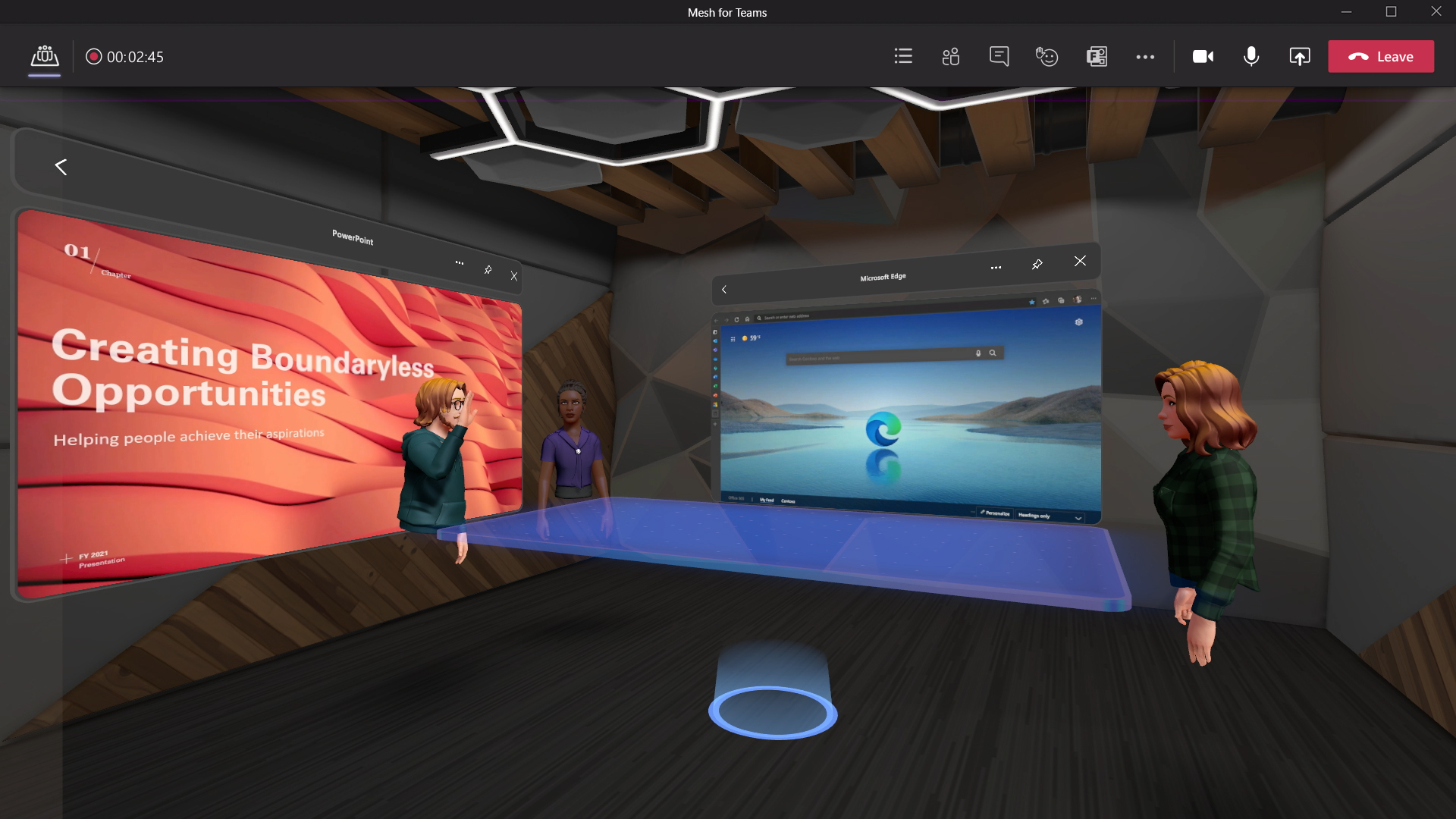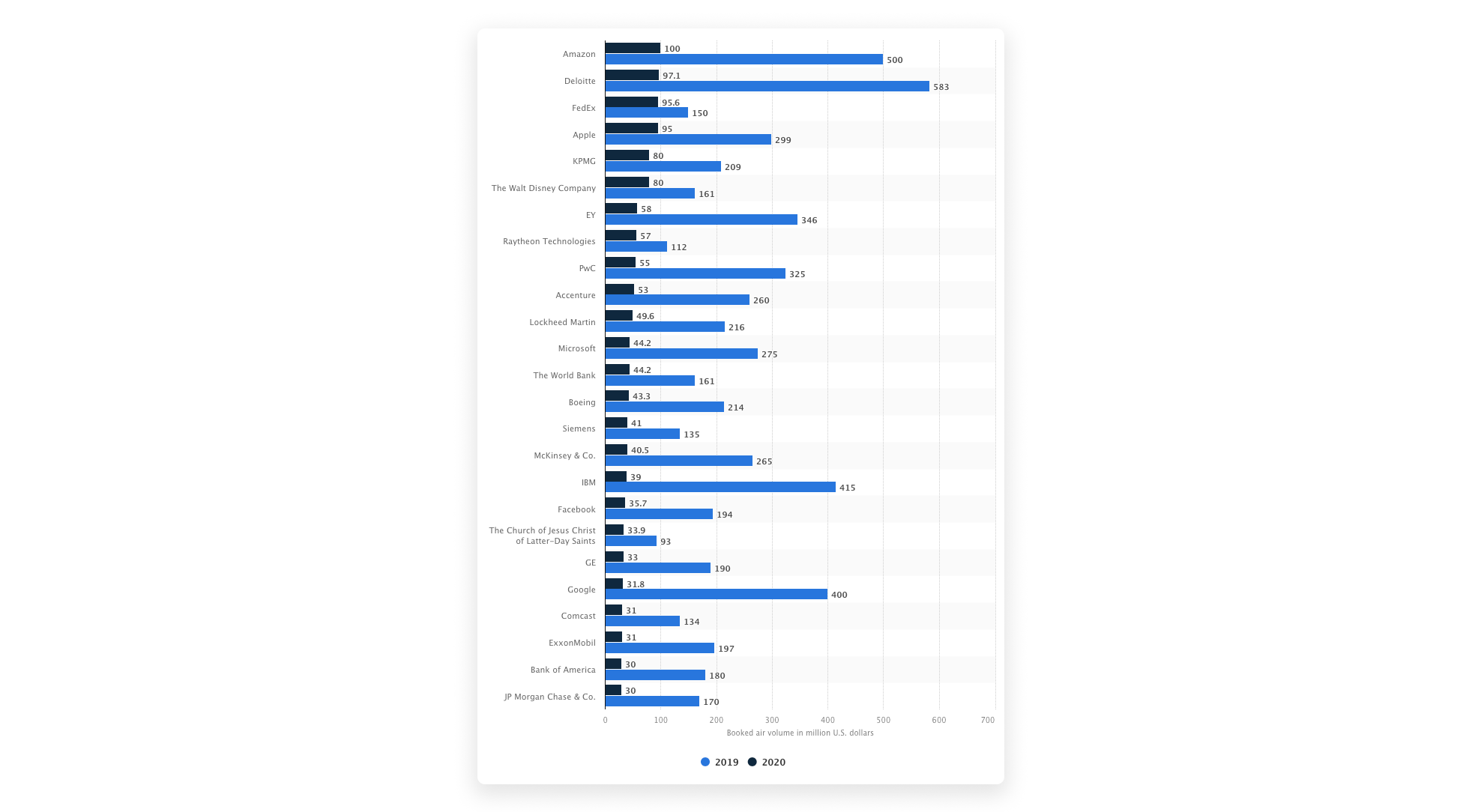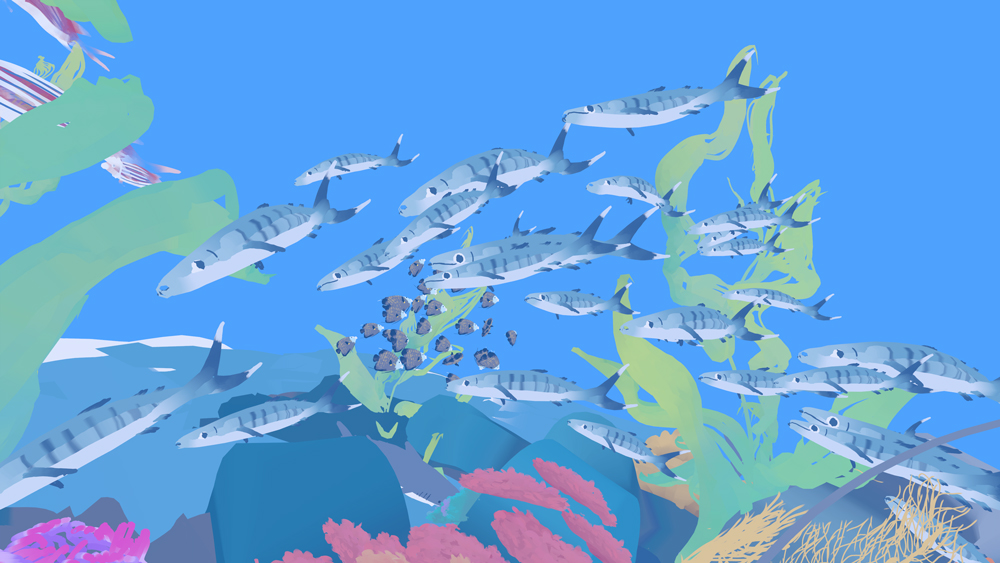In late October 2021, Facebook changed its name to Meta. And announced the ambitious Metaverse project in the Connect 2021 keynote. I was excited to see a tech giant pledged to invest heavily into an unknown realm and bet its future on it. As a used-to-be industrial design practitioner who has fluent 3D skills, I even called my classmate at UW who had a passion for AR/VR saying that maybe we can do something together—like become developers for the Metaverse.
However, after spending some time thinking about it. I became cautious and eventually pessimistic about the Metaverse. The rationales were based on my experience working on software + hardware projects as a Product Manager & Designer for 7+ years.
I wanted to write this post as early as November 2021. But as I was busy working on the End-of-Year campaigns and product planning works for my full-time job, plus my Christmas road trip to Oregon, I procrastinated until now.
TL; DR & My Opinions
- Zuckerberg hopes the Metaverse to be the successor to the mobile internet.
- My opinion: While theoretically useful and cool, some scientific & cognition challenges can block the wide adoption of the tech. The reception of the solution by the mainstream population will decide if Metaverse can live up to the hype.
- My opinion: I believe the adoption would be better in the professional market vs. the consumer one.
-
My opinion: Allowing people without VR headsets to engage in the Metaverse will lower the entrance barrier. With a boosting Metaverse population, the industry is more likely to invest more resources and build the ecosystem together.
If you have not watched the Connect 2021, no worries. Here are the “whys”, “hows”, and “whats” of the Metaverse according to Zuckerberg:
- From computers to cellphones with a camera, the Internet has a trend of being visual.
- From image to video, the medium is getting more immersive.
- Meta wants to build a successor of the mobile Internet.
- Regarding digital wellbeing, for Metaverse, it’s not making people spend more time on the screen, it’s to make the time spent more vivid.
- Zuckerberg hopes one billion people can enter the Metaverse in the next decade.
- Core concepts of the Metaverse are feeling of presence, avatar, home space, teleporting, interoperability, privacy & safety, virtual goods, natural interface.
My Thoughts of the “True Whys”
Choked by Apple
From iOS/iPadOS/tvOS 14.5, apps must ask for permission before tracking users’ activity across third-party companies’ apps and websites. Since the announcement of the feature, Facebook had tried to fight back or at least to delay the implementation of the change. Even though Facebook encouraged users to allow tracking, 82% of the US users opted out. As a result, Facebook lost $10B ad sales. A significant portion of ad budget from businesses that used to be Facebook’s went to Google, TikTok, or Amazon’s search engine ad business. When the FY2021 Results were reported in early February, $300B worth of market value is gone.
It’s not over yet, Google recently followed suit and announced the Privacy Sandbox for Android. Which I assume will do a favor to the Google Ads and push up the Advertisement Cost of Sales of the Facebook ad platform.
The management team must have forecasted the impact of the iOS change much earlier. The access points to Meta’s core services are limited: an app on a phone/tablet, or the website——whichever, it’s through an Operating System (OS). As the OS is now the choking point, the task for Zuckerberg is to build Facebook its OS. It could be a mobile device OS, or something else. But as Apple and Google have dominated the phone OS market and formed the duopoly of the ecosystem, no other parties can make a dent—even with strong motivation and resources—such as Microsoft or the Chinese government.
So, it should be a new OS beyond the current industry scope.
Note: there have been several “rumors” that Meta has “dismissed” the XROS team and clarification from Meta that they are expanding instead of shrinking on the OS initiative. I assume it’s an ongoing optimization of development team organization, instead of pivoting of the goal.
The Acquisition of the Younger Generation
As the FY2021 Results have revealed, Facebook’s Daily Active User (DAU) has almost peaked at 1.93B. I read reports earlier that Facebook is having issues acquiring users of a new generation. TikTok and Snapchat have strong traction among young folks.
If we think deeper—what’s the nature of failing to acquire new users, or failed to compete with other offerings, in the domain of social network—likely because of an emerging interaction experience or a unique community vibe—think about Clubhouse—which enjoyed a surge in popularity simply because there were no other products had such experiences—vocal-based and celebrity community!
Considering the scale of Facebook.com, to carry the business goals of a semi-trillion company, the new frontier must:
- Be able to scale from both product and engineering for future growth.
- Have a rich experience to attract and retain new, preferably young users.
- Be able to empower businesses to profit from operating in it, to form an eco-system.
- Be free from any other business entities’ control.
- Leverage Facebook’s existing assets—user base, user network, engineering infrastructure, AI research.
If we think from the two “why’s”, there are very limited options for Facebook. Metaverse is one of the most promising choices.
Value of the Metaverse
The Metaverse’s three Core Principles—being immersive, people connection, physical properties in the digital world—nurtures values in the following domains: Social Experience, Business Collaboration, Entertainment, Professional Verticals.
Social Experience

The immersive experience of VR is unique. When I had my first taste of VR in 2017 using my friend’s HTC Vive, it was stunning. In the virtual space, I played games, watched videos, “toured” the world—in their natures everything I tried was not new, I can play games, watch videos, or view pictures on a flat monitor—it was the immersive feeling that separates the VR apart from the existing digital media.
The LA concert demo in the Connect 2021 keynote showed how friends in different geolocations can share moments and space. Many of my connections are not in where I live now (the Seattle area). Even though I can FaceTime them wherever they are, the feeling of being together is not there.
It was the combination of the sense of distance, micro expression, gestures that made me want to play with friends, not only about what they say or what we play together. Other than meeting in the real world, only VR can provide such elements.
Business Collaboration
Effective Communication & Improved Productivity
Two years have passed since most knowledge workers in the US started to work from home (WFH) in light of the COVID-19 pandemic. One of the frustrations many folks had during WFH is the communication of complex ideas.
For example, as a product manager, across the company, I need to communicate ideas about product strategy, articulate the experience of a feature, propose new engineering solutions. Without visualization on the fly, i.e., whiteboards, the meetings would be full of confusion. One time, I was in a Zoom call discussing a technical issue, a developer spent 20 minutes trying to explain a problem, we had a hard time understanding what he was talking about. I activated my stylus board and started the virtual whiteboard. Within 5 min, we were crystal clear about what he was trying to express, within another 5 min, we came up with the solution.
In Zoom calls, most people only speak or listen—so the communication is more like from radio stations to receivers—all info exchanged are ephemeral—without documentation, hitting a time threshold, people will get lost and the meeting’s productivity will drop; many meeting participants don’t turn on the webcam—the speaker won’t know if others have fully understood the ideas or even if they are paying attention.
The Horizon Workrooms is a great solution to ease the pain discussed above. The feeling of presence enhances engagement and somehow makes business meetings more enjoyable. A side benefit of using an avatar instead of a real person’s video feed is that you don’t need to worry about the messy hairstyle or work while wearing a PJ.

As the world’s largest software company that prioritizes the business market, business collaboration is the first VR experience that Microsoft is going to ship with production software, starting from Mesh for Teams. In the Microsoft Ignite 2021 video, there would be two Teams features powered by Mesh: 3D dynamic avatar generated by AI using voice tones and other user interactions with the software; digital workspace to create the feeling of being together and nurture spontaneous social connections.
It’s worth noting that the Mesh for Teams experience would be available across PC, mobile, and headsets. In my opinion, it’s a smarter move as it will allow many users who have no VR experience to peek into VR. Converting 2D customers on PC or mobile who have exposure to VR to be a metaverse adopter is possibly easier than converting a customer that has no exposure at all.
In the Alex Fridman Podcast EP267 with Zuckerberg, Mark shared an assumption: if VR is proved to be a better computing device that can improve Meta employee’s productivity by 5%, he will buy it for everyone, and other companies will do the same.
Reduce Operating Cost

Reducing operating costs is another reason why the Metaverse is good for business. According to Statista, leading corporates in the US had a deep cut of their business air travel expenditure in 2020 compared with 2019 due to the pandemic. Google saved as high as 92%; for Apple, who need to deal with hardware R&D and supply, some travels are essential, still saved as high as 69%—that’s 200 million USD a year. The Great WFH wave shows most of our business travel can be replaced by video conferences. It is reasonable to expect the Metaverse would elevate the digital meeting experience to another level.
With the boost of WFH productivity plus the decrease of business operating cost, the industry has billions of dollars’ motivation to embrace the Metaverse.
Entertainment & Arts
New Formats of Arts
Beyond the VR version of pre-VR activities (gaming, watching movies, teleconference), there are new entertainment & art formats that are created in and for VR space—I’d call them VR-first-arts (VR1A).

For example, my friend Alice Liu created a spatial painting after a tour in Taiwan. She created it using Quill on Oculus. In my limited knowledge, this format of art emerged only after the VR tech became available. Strolling in the painting was an experience I have never had before.
New Business Models
Inspired by the Connect 2021 LA concert demo, I envision in the future, live show sales managers can sell VR tickets: the price would be based on the physical seat position in the concert hall; the manager can decide whether certain “seats” are limited or free-for-all.
Or vendors on the Metaverse, can sell a season pass for performances from a collection of bands, symphonies, indie artists—just like Netflix or HBO Max—but in an immersive VR experience.
Professional Verticals
Social Experience & Business Collaborations are for the mass market, in some industries VR has already been used for decades. For example, carmakers use VR to evaluate new designs at a lower cost; NASA and the defense industry started to use VR for training & simulations from as early as the late 1980s.
However, even though these industries have already benefited from VR, they are in silos. The VR solutions they use are usually tailor-made, resulting in a much higher purchase & operating cost. And the iteration is much slower than typical consumer electronics. Just like the mainframe computers before the prevalence of personal computers.
If the Metaverse gained traction in the mass market, the readily available hardware & software platforms that iterate at consumer product’s pace will significantly lower the operating cost for verticals that used to rely on specialized solutions.
Challenges Ahead
The paragraphs above talked about the beauty of the Metaverse, seems we have every reason to jump into the Next Big Thing. However, there are five key challenges ahead before Metaverse can gain a foothold in the fierce and fast-moving market.
Ease of Use & the Competition from Other Devices & Apps
A VR headset today weighs around 500 g (17.6 oz). To ensure an immersive experience, the mounting has to be tight and well-sealed. The result is discomfort. Don’t underestimate how the discomfort feeling will deter the user from continuous use of the headset and its impact on long-term engagement. On consumer products, every layer of funnel kills conversion, and the physical funnel is a hard (literally) one.
For instance, a friend of mine owns iPhone, PC, Xbox console with a 4K TV. It turned out gaming on iPhone won the attention competition. He told me it’s so easy to play on the phone—just pick up and play, lock the screen to stop playing. While PC or Xbox require him to sit well, click buttons, click on menus, wait for loading, then play. The low barrier outweighs all benefits of gaming on PC or Xbox—rich content, better visual experience, immersive acoustics. The same attention competition would also happen to users who have Metaverse headsets and phones.
The surging popularity of TikTok highlights a characteristic of humanity—always chasing for quick stimulations and thus unable to focus for a long time. Ready Player One depicted a world everyone spends hours if not the whole day in the “Oasis”. I doubt that. The physiology limit of human beings has determined that we need to keep returning to reality to stay comfy—like drink water or go to the restroom. Our sensitive facial skin will protest with rash or acne for excessive contact with the headset sealant.
All this will discourage the headsets from being accepted as daily gear.
Uncertainties in the Development with Atom & Human Body
In Connect 2021, when talking about research efforts to make Metaverse real, Michael Abrash, Chief Scientist of Reality Labs listed a slew of projects his group is working on—displays, audio, input, haptics, hand tracking, eye tracking, mixed reality, sensors, graphics, computer vision, avatar, perceptual science, AI… While understand it’s a long-term effort, I doubt if there’s any research division at an existing corporation that can work on each track laser-focused and yield production-ready technology and make them work together.
An important reason software companies are so successful was because most problems they are trying to solve are clear and can be decomposed into user stories, feature blocks, releases, until as specific as code commits. And the tools to realize the goal are readily available—programming languages, OS, machines. They are solving known issues with known tools.
However, a product that involves hardware components, especially those that try to solve problems that have never been solved before, are atom challenges. In that case, it’s no longer a pure engineering project, it requires scientific research. It’s hard to set a timeline for scientific projects—the more you discovered, the more questions you will have. The ever “30 years later” ITER is an example of the challenges for projects that mix scientific & engineering requirements.
Not to mention the approach Meta chose requires research on human physiology—that’s another universe yet to discover.
Content Creation
I studied Industrial Design in college. I became an expert Computer-Aided Design/Engineering (CAD/E) software user that has spent thousands of hours in the 3D world—I know how labor-intense it is to start the design from a sketch on my notebook till wrapping up a production-ready CAD model. It’s similar in the gaming & animation industry: a handful of creators come up with concepts, but it will take thousands of artists, animators, modelers to complete the virtual world.
If “worlds” play a central role in the Metaverse to contain all applications, and I assume most applications on the Metaverse are spatial, the content/application creation will be more labor-intensive compared with web or app development. However, the value of the additional development is not likely to scale up as the code for the 2D interactions. For example, developing a chat app for smartphones takes X amount of time, developing the same app for the Metaverse will take kX amount of time, k>1 considering extra development & QA hours. But the value of the app is equal on two platforms—extra engineering hours don’t necessarily yield higher value for the customers. From the cost-effectiveness standpoint, some creators/developers may choose web/app over the Metaverse, just like they choose to develop for iOS over iPadOS.
Meta seems to have noticed this hurdle too. On Feb 23rd, Zuckerberg shared the “Builder Bot” demo to show how AI can assist the world development process, hopefully, the assistance can lower the k value.
Cross-Vendor Software Development Kits
Please note I’m using the word “cross-vendor” instead of “cross-platform”. If Metaverse is what Zuckerberg has hoped for—a space that is not owned by any company, but a shared place that objects and services are interoperable across the industry, just like .jpg file can be viewed on macOS, Windows, Linux—then there should be no concept of platform. So, in this case, Meta is a vendor in the Metaverse.
The challenge is, how would Meta work with other companies like Microsoft or Apple to define the framework of Software Development Kit (SDK) that is compatible with each company’s tech stack? Today, there is no organization for the Metaverse that is like W3C in the web developer community.
The value of having cross-vendor SDKs is to allow developers to propagate the product or service from one vendor to another with minimum effort. It would also be the foundation for interoperability.
Cold Start the People Network
Better communication, for business or personal use, is one of the key value propositions of the Metaverse. To set up Meta’s Metaverse meeting, all participants are required to have supported headsets. Here’s the classic social network cold-start challenge—if there’s no one I know on the platform, why should I choose to join the platform—if I’m not on the platform, why would my connections choose to come? But this time the hurdle is much higher—the requirement for the hardware—that’s a $300–400 investment. You can’t use the customer acquisition tool for the software world to jumpstart the Metaverse, like sharing a link to sign up or receiving a $5-worth coupon to get a friend to register.
Again, as I said in the Effective Communication & Improved Productivity section above, I like the Microsoft way of transitioning and acquiring users into the new experience. By allowing people to engage in the Metaverse using PC and mobile devices, Microsoft prioritizes People Network over Device Network. When you have users, everything will be easier.
Conclusion
In conclusion, the Metaverse could be a highly desirable experience for those who need better telecommunication and want to expand their digital sensation. However, the hurdles in the technical feasibility and customer acquisition will eventually decide the viability of the whole concept. Even in the extremely VR-friendly era like the COVID-19 pandemic, Oculus is still a niche product. I doubt if positioning Metaverse as a consumer product is the best direction. If the Metaverse initiative, unfortunately, failed (hope not), the intellectual property gained through the endeavor might be Meta’s only return that can be applied to other areas like aerospace or health care.
Metaverse has been a hot topic for a while. After talking with friends sharing my opinions, I feel it would be better if I write them down so that I can share and learn more through reader feedback. Metaverse is a big topic, with my limited knowledge, my writing may have missed more significant value propositions or trickier challenges of the new world. If you find errors in this post, aspects that I missed, or you have a different opinion, please feel free to comment or send me an email. Thanks for reading.
